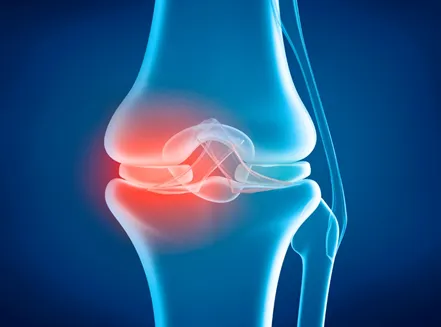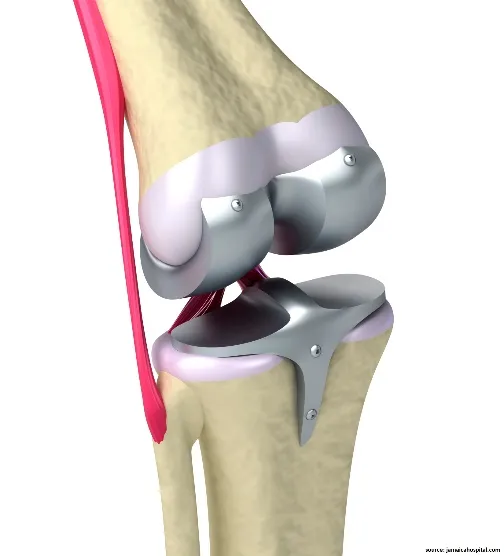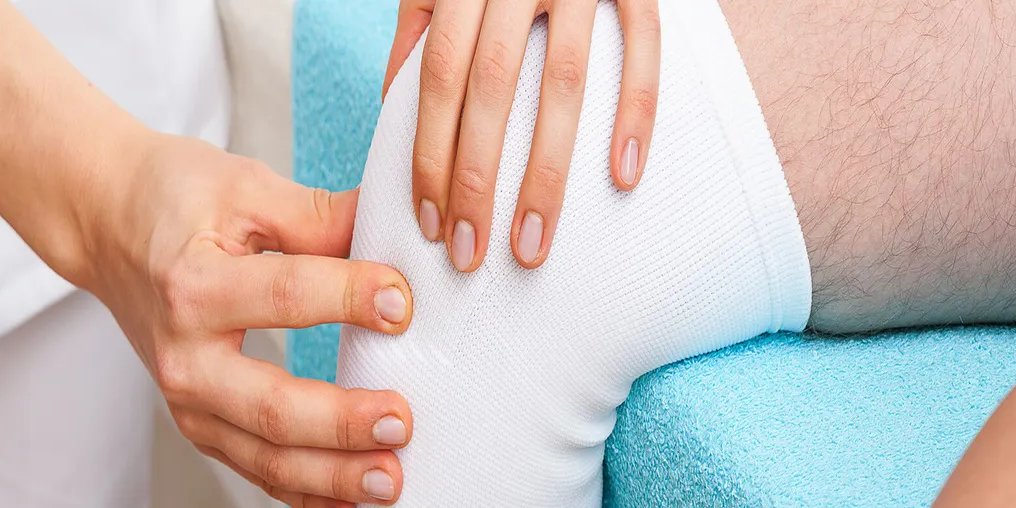- Nowadays, many people in Bhubaneshwar with knee problems are opting for a knee replacement procedure. They visit their orthopedic doctor in Bhubaneshwar to learn more about the procedure.
What is a Knee Replacement Procedure?

- Knee’s range of motion
- Strength
- Stability
- X-rays to see the damage’s extent

Your specialist can select from various knee replacement prostheses and surgical techniques. Your age, weight, knee size, activity level, shape, and overall health are considered. Now let us move on to understanding why exactly you might need a knee replacement. Some people experience knee pain even while they are at rest.
Why is a Knee Replacement Performed?
The most general reason for the knee replacement procedure is to relieve osteoarthritis’s severe pain. People requiring knee replacement procedures often have issues walking, getting in and out of chairs, and climbing stairs.Some people experience knee pain even while they are at rest.
Risks in a Knee Replacement Procedure
The knee replacement procedure, like any procedure, has risks. They involve:
- Infection
- Blood clots in the lungs or leg vein
- Heart attack
- Stroke
- Nerve damage
Notify your specialist at once if you notice any signs of infections like:
- Fever higher than 100 F (37.8 C)
- Shaking chills
- Drainage from the surgical site
- Increasing redness, swelling, tenderness, and pain in the knee
Artificial knees can wear out
Another knee replacement procedure’s risk is an artificial joint failure. Regular use wears even on plastic parts and the strongest metal. Joint failure risk is more if you stress the joint with excessive weight or high-impact activities. Now that you understand the risks involved in a knee replacement, let us move to what you can expect during various procedure phases.What you can expect during Knee Replacement
Before the procedure : The knee replacement procedure requires anesthesia. Your preference and input help the team determine whether to utilize general anesthesia or spinal anesthesia. General anesthesia makes you unconscious, and spinal anesthesia keeps you awake, but you cannot feel pain from your waist down. You will be given an intravenous antibiotic before, at, and after the surgery to help avoid post-surgical infection. You may also be provided with a nerve block around your knee to numb it. The numbness wears down gradually following the surgery.- Your knee will be in a bent position to reveal all joint surfaces.
- Then making an incision almost six to ten inches (fifteen to twenty-five centimeters) long, your specialist moves aside the kneecap and removes the damaged joint surfaces.
- After preparing the joint surfaces, your doctor attaches artificial joint pieces.
- Before closing the incision, the surgeon bends and rotates your knee, testing it to function properly. The procedure goes on for about two hours.
- You will be kept in a recovery room for one to two hours. After that, you will be transferred to your hospital room, where you will likely remain for a few days. Your doctor prescribes medicines to help manage pain.
- At the hospital stay, you will be encouraged to move your ankle and foot, enhancing blood flow to your leg muscles and preventing swelling and blood clots.
- You will likely get blood thinners and wear support compression or hose boots to protect more against clotting and swelling.
- You will be asked to do regular breathing exercises and gradually raise your activity level.
- The day after your surgery, a physical therapist will show you how to exercise your new knee. When you leave the hospital, you will continue physical therapy at a center or home.
- Do your exercises, as per the guidelines. For early and successful recovery, follow all your care team’s guidelines regarding wound care, diet, and exercise.
What are the Results after a Knee Replacement?

- You can bend your knee enough to sit in a car
- Have adequate muscle control to operate the brakes and accelerator
- Are not taking narcotic pain medications
- After recovery, you can do various low-impact activities, like swimming, walking, golfing, or biking.
FAQs
What Is The Most Prevalent Post-Knee-Replacement-Surgery Complication?
Pain and Other Physical Complications Physical consequences after knee replacement surgery might include everything from pain and swelling to implant rejection, infection, and bone fractures. The most common consequence after knee replacement surgery is pain.

